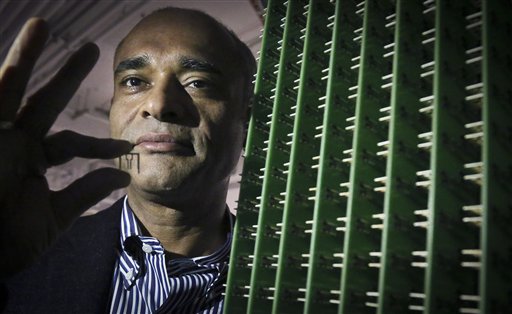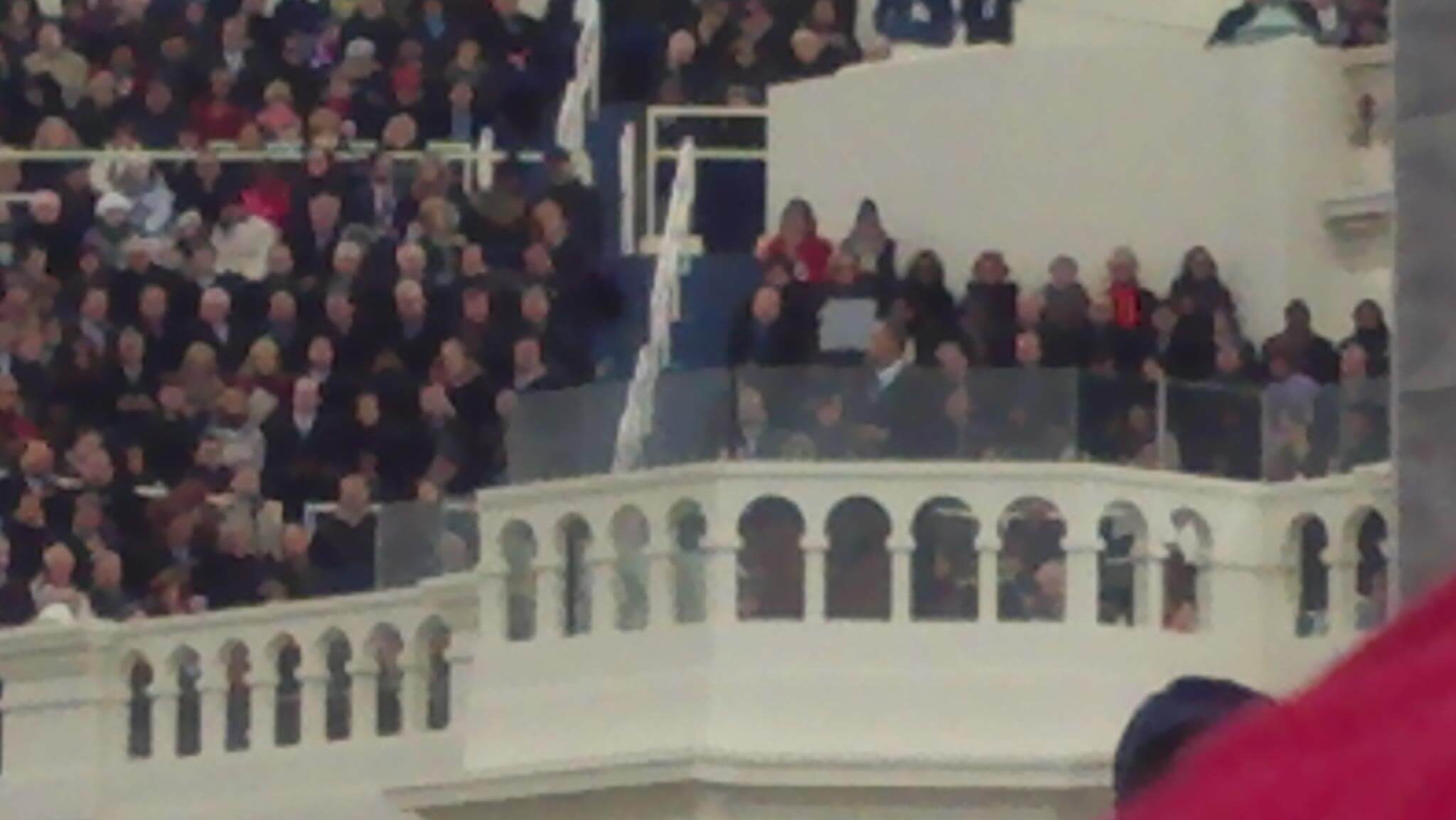Aereo has stopped the television world on a dime. Or rather, a dime-sized antenna.
Broadcasters blasted the company, which provides live-streaming broadcasts to subscribers, on Monday at the National Association of Broadcasters’ annual conference.
Speaking from the NAB Show in Las Vegas – parts of which are being streamed live online this week – keynote speaker Chase Carey, president and COO of News Corp., threatened to move Fox to cable from broadcast if Aereo continued to win in the courts.
“We are committed to broadcasting under a business model where programmers receive fair compensation from parties that want to redistribute our product,” Carey said in a written statement following his speech. “We believe that Aereo is pirating our broadcast signal.”

- Aereo CEO Chet Kanojia holds one of the company’s tiny antennas, standing near a server array of them. (AP Photo/Bebeto Matthews)
Aereo emerged victorious April 1 in a ruling by the The Court of Appeals for the Second Circuit. The 2-1 ruling clarified that Aereo’s business model – an antenna for every customer – doesn’t violate copyright law; in fact, it was the company’s saving grace.
Aereo customers pay a monthly or annual subscription fee, based in part on how much digital storage space they’d like. Then, they’re assigned a tiny antenna – no cable box or any other equipment – that’s kept with all other antennas at an offsite location maintained by the company. That antenna allows subscribers to watch live broadcast television on their computer, and they can also save content to watch later.
“The story of the technology is a lot more interesting” than coverage of the court battle Aereo CEO Chet Kanojia said in a phone call with Poynter. “The migration to the internet is inevitable … and the marketplace hasn’t responded yet.”
Broadcasters are “concerned from a revenue standpoint,” said Mike Cavender, executive director for the Radio Television Digital News Association. They worry that online subscriptions to Aereo could cut down on cable subscriptions for the networks – and that could mean less advertising revenue and fewer advertising deals.
Aereo is currently available only to subscribers in New York City, but it intends to move into 22 other markets.
One of them is Madison, Wis. It’s “relatively straightforward, but a lot of work,” Kanojia said of the expansion. “We’ve spent the last year making sure we can scale the technology.”
Tailoring the technology involves making sure there’s a space to house the antennas and other operating equipment; it also means a PR push to get consumers to start using the service.
“In large cities it makes sense,” that Aereo will move in as a competitor, said Tom Bier, vice president and general manager of WISC-TV in Madison. The area WISC-TV serves is “a small market,” he said.
“From our standpoint, [Aereo is] no different from anyone else, and we have a copyrighted signal, and we should be compensated for that,” he said.
The reasons for Aereo’s move to markets like Madison may be unclear to those outside Aereo’s boardroom; the startup costs of bringing the technology to smaller towns may shrink Aereo’s profit margins compared to operating in an urban, dense market like New York City. Barry Diller is among Aereo’s investors.
When Aereo debuted in 2012, it was slapped with the lawsuit related to Monday’s ruling. Networks, including ABC and NBC, sued to protect their copyright of broadcasted material. The appeals court said Aereo was involved in a “storage” service, not a “transmission” service.
That’s where the antennas come into play. Even though thousands of Aereo subscribers may watch the same episode of The Bachelor at once, the antennas each send out their own stream to their assigned subscribers.
The judges in the majority ruled that that constitutes a “private” rather than a “public” performance. A “private” performance here would constitute someone watching TV in their own home, while a “public” performance would be more along the lines of people watching TV at a bar.
Dennis Wharton, executive vice president of communications for the National Association of Broadcasters, said the association is “disappointed with the Second Circuit’s 2-1 decision” in a prepared statement.
“Frankly, the conclusions were reached on the merits of the technology,” Kanojia said. “We set out to comply with the law, and so far, the courts have sided with us.”
While the broadcast networks are concerned with the court’s decision, Kanojia says he’s concerned with another group: consumers.
“The macro trend is, people want access to content, and access to television wherever they are,” Kanojia said. “The consumer expectation is there.”
Some broadcasters are at least partly on the same page as Kanojia. Bier said WISC-TV has had a website since 1998 and was an early adopter of broadband. It also has a live internet stream of its newscasts – for free – with some copyrighted portions (like commercials, NFL-related news and other sports coverage) blacked out. And with the dawn of the mobile age, the station has developed apps for cell phones and tablet devices.
“We’re looking forward,” Bier said. “We recognize in the tablet world, in the mobile world, we need to be relevant,” he said.







Comments